Archive for August 13th, 2016
13th August
2016
George and Dragon HighRelief 1oz Silver Coin. George and Dragon HighRelief 1oz Silver Coin!! Extremly low mintage limit, only 3,000!! Pre-sale date after 31 January 2014. Coin with convex shape!!! Coin availeble for Pre-sale only. You have a unique chance to be one of the first who will have this coin. We will get it in the first day issue in Mint. (Georgios), Latin: Georgius; c. 275/281 23 April 303 AD, born in Lydda in what is now Israel, was a soldier in the Roman army and was later venerated as a Christian martyr. His father was Gerontius, an important official in the Roman army. Saint George became an officer in the Roman army in the Guard of Diocletian. In hagiography, Saint George is one of the most venerated saints in the Catholic (Western and Eastern Rites), Anglican, Eastern Orthodox, and the Oriental Orthodox churches. He is immortalized in the tale of Saint George and the Dragon and is one of the Fourteen Holy Helpers. His memorial is celebrated on 23 April, and he is regarded as one of the most prominent military saints. Many Patronages of Saint George exist around the world, including: Georgia, England, Egypt, Bulgaria, Aragon, Catalonia, Romania, Ethiopia, Greece, India, Iraq, Israel, Lebanon, Lithuania, Palestine, Portugal, Serbia, Ukraine and Russia, as well as the cities of Genoa, Amersfoort, Beirut, Botosani, Drobeta Turnu-Severin, Timisoara, Fakiha, Bteghrine, Cáceres, Ferrara, Freiburg im Breisgau, Kragujevac, Kumanovo, Ljubljana, Pérouges, Pomorie, Preston, Qormi, Rio de Janeiro, Lod, Lviv, Barcelona, Moscow and Victoria, as well as of the Scout Movementand a wide range of professions, organizations and disease sufferers. Eastern Orthodox depictions of Saint George slaying a dragon often include the image of the young maiden who looks on from a distance. The standard iconographic interpretation of the image icon is that the dragon represents both Satan Rev. 12:9 and the monster from his life story. The young maiden is the wife of Diocletian, Alexandra. Thus the image, as interpreted through the language of Byzantine iconography, is an image of the martyrdom of the saint. [citation needed] The episode of St. George and the Dragon was a legendbrought back with the Crusaders and retold with the courtly appurtenances belonging to the genre of Romance. The earliest known depiction of the legend is from early eleventh-century Cappadocia (in the iconography of the Eastern Orthodox Church, George had been depicted as a soldier since at least the seventh century); the earliest known surviving narrative text is an eleventh-century Georgian text. White George on the coat of arms of Georgia. In the fully developed Western version, which developed as part of the Golden Legend, a dragon or crocodile makes its nest at the spring that provides water for the city of “Silene” (perhaps modern Cyrene in Libya or the city of Lydda in the Holy Land, depending on the source). Consequently, the citizens have to dislodge the dragon from its nest for a time, to collect water. To do so, each day they offer the dragon at first a sheep, and if no sheep can be found, then a maiden is the best substitute for one. The victim is chosen by drawing lots. One day, this happens to be the princess. The monarch begs for her life to be spared, but to no avail. She is offered to the dragon, but then Saint George appears on his travels. He faces the dragon, protects himself with the sign of the Cross, slays the dragon, and rescues the princess. The citizens abandon their ancestral paganism and convert to Christianity. The dragon motif was first combined with the standardised Passio Georgii in Vincent of Beauvais’ encyclopaedic Speculum Historiale and then in Jacobus de Voragine’s “Golden Legend”, which guaranteed its popularity in the later Middle Ages as a literary and pictorial subject. The parallels with Perseus, Cetus and Andromeda are inescapable. In the allegorical reading, the dragon embodies a suppressed pagan cult. The story has other roots that predate Christianity. Examples such as Sabazios, the sky father, who was usually depicted riding on horseback, and Zeus’s defeat of Typhon the Titan in Greek mythology, along with examples from Germanic and Vedic traditions, have led a number of historians, such as Loomis, to suggest that George is a Christianized version of older deities in Indo-European culture, or at least a suitably Christian substitute for one of them. In the medieval romances, the lance with which St George slew the dragon was called Ascalon, named after the city of Ashkelon in the Levant. 1 Oz 31,1 g. 27 x 47 mm. Nice Authentic add to your collection. We are established and guarantee the authenticity of the products we sell. We have our inventory of precious metals bought only from reputable mints. Please consider your fair Feedback. Let us know if you need this overnight. We will do our best to accommodate your request. Fast shiiping will take 3-4 days(extra charge). For damaged items, please save all outside and inside packaging and wrapping for inspection by the Post Office. Return item must be sent within 14 days after it has been received. We will do our best to satisfy our customers. Fell free to contact if you have any questions. The item “Niue Islands 2014 $2 icon St. George and Dragon HighRelief 1oz Silver Coin” is in sale since Saturday, November 16, 2013. This item is in the category “Coins & Paper Money\Coins\ World\Australia & Oceania\South Pacific”. The seller is “worldancient” and is located in Etobicoke, Ontario. This item can be shipped worldwide.
Comments Off
13th August
2016

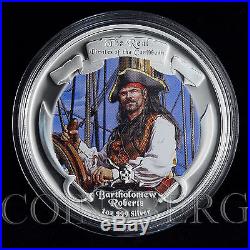
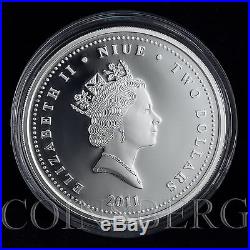

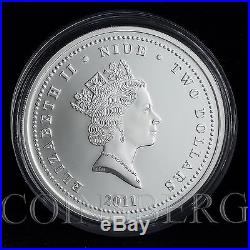

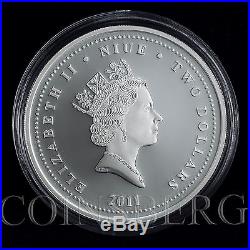


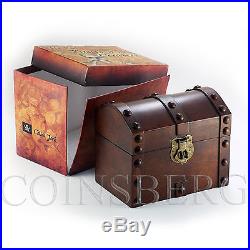
New Zealand Mint has created another masterful 1 oz. Silver Coin Set with the release of the 2011 Real Pirates of the Caribbean Four Coin – Treasure Chest Box Set. This highly collectible coin set features Blackbeard, Calico Jack, Bartholomew Roberts, and Henry Avery the most infamous pirates to roam the high seas. Each pirates image is colourfully depicted in exquisite detail on the back of each coin. This set is displayed in a replica wooden pirates chest, each set includes a skull and crossbones pendant necklace and a certificate of authenticity with a background on each famous pirate. The great or classic era of piracy in the Caribbean extends from around 1560 up until the mid 1720s. The period during which pirates were most successful was from 1700 until the 1730s. Caribbean piracy arose out of, and mirrored on a smaller scale, the conflicts over trade and colonization among the rival European powers of the time, including the empires of Britain, Spain, the Netherlands, Portugal and France. Most of these pirates were of English, Dutch and French origin. Because Spain controlled most of the Caribbean, many of the attacked cities and ships belonged to the Spanish Empire and along the East coast of America and the West coast of Africa. Dutch ships captured about 500 Spanish and Portuguese ships between 1623 and 1638. Some of the best-known pirate bases were New Providence, in the Bahamas from 1715 to 1725, Tortuga established in the 1640s and Port Royal after 1655. The reverse of the coins features a full coloured image of the most famous Caribbean pirates; Edward Teach or Blackbeard, Calico Jack Rackham, Henry Avery and the most successful Bartholomew Roberts. The obverse of the coin features The Raphael Maklouf effigy of Her Majesty the Queen Elizabeth II sovereign of the commonwealth of Niue. The item “Niue $2 Real Pirates of the Caribbean 4 x1 oz Silver Coloured Coin Set 2011″ is in sale since Tuesday, November 24, 2015. This item is in the category “Coins & Paper Money\Coins\ World\Australia & Oceania\South Pacific”. The seller is “coinsberg” and is located in Kyiv. This item can be shipped worldwide.
- Country: Niue
- Year of Issue: 2011
- Face Value: 2 dollars
- Metal Purity: Silver 0.999
- Weight: 1 Oz
- Dimensions: 40,7
- Quality: Proof
- Mintage: 8000
- Box: Yes
- CoA: Yes
Comments Off
